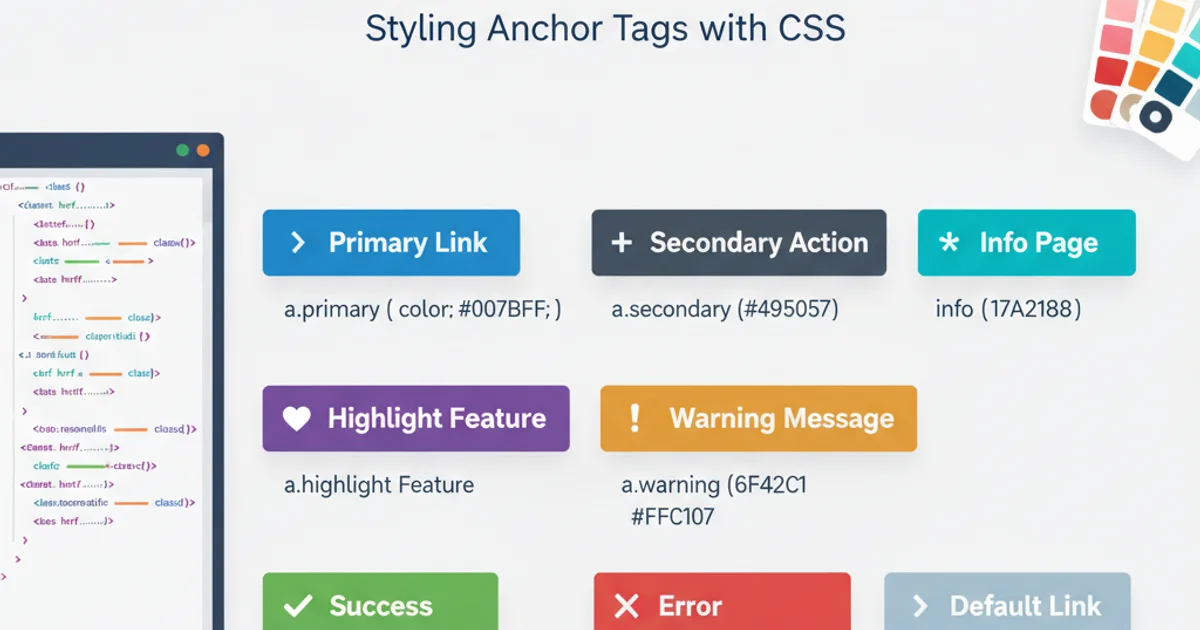Is a URL with // in the path-section valid?
Categories:
Understanding URL Path Validity: The Case of Double Slashes (//)

Explore the nuances of URL path validity, specifically focusing on the implications and interpretations of double slashes (//) within the path section according to RFC 3986 and common web server behavior.
URLs are fundamental to the web, but their structure and interpretation can sometimes be a source of confusion. One common question arises when encountering double slashes (//) within the path component of a URL. Is such a URL valid? How do different systems, from browsers to web servers, handle them? This article delves into the specifications, practical implications, and security considerations surrounding URLs with double slashes in their path section.
RFC 3986 and Path Segment Interpretation
The authoritative document for Uniform Resource Identifiers (URIs), which URLs are a subset of, is RFC 3986. This RFC defines the generic syntax for URIs, including the path component. According to RFC 3986, a path consists of a sequence of path segments separated by a single slash (/).
Specifically, section 3.3, 'Path', states that 'The path component is organized in a hierarchical sequence of path segments, separated by a slash (/) character.' It also clarifies that 'A path segment that contains a colon (':') cannot be used as the first segment of a relative path reference, as it would be mistaken for a scheme name.'
While the RFC defines segments as being separated by single slashes, it doesn't explicitly forbid multiple consecutive slashes. Instead, it implies that multiple slashes would result in 'empty' path segments. For example, in /a//b, the path segments would be a, an empty segment, and b. This interpretation is crucial for understanding how various systems process such URLs.
flowchart LR
A[URL String] --> B{Parse Scheme & Authority}
B --> C{Extract Path Component}
C --> D{"Path: /a//b"}
D --> E[Split by '/' -> Segments]
E --> F["['a', '', 'b']"]
F --> G{Normalize Path (Optional)}
G --> H["Result: /a/b (often)"]Flowchart illustrating URL path parsing and normalization with double slashes.
Practical Implications and Server Behavior
In practice, most web servers and browsers treat multiple consecutive slashes in the path as a single slash. This behavior is often referred to as 'path normalization' or 'slash collapsing.' For instance, a request to http://example.com/path//to/resource will typically be processed by the server as if it were http://example.com/path/to/resource.
This normalization is generally beneficial as it prevents different URLs from pointing to the same resource, which could lead to issues with caching, SEO, and duplicate content. However, it's important to note that this is a common implementation detail rather than a strict requirement of RFC 3986. Some older or non-standard compliant systems might behave differently, potentially leading to unexpected results or even security vulnerabilities if not handled carefully.
For example, some web application firewalls (WAFs) or routing rules might be bypassed if they are not designed to normalize paths before applying their logic. Similarly, if an application relies on the exact path structure for security checks or resource access, the presence of double slashes could introduce a vulnerability.
GET /path//to/resource HTTP/1.1
Host: example.com
User-Agent: Mozilla/5.0
Accept: */*
Example HTTP request with double slashes in the path.
Security Considerations and Best Practices
The ambiguity of double slashes can sometimes be exploited in security contexts. Attackers might use them to bypass security filters, access controls, or routing rules that are not robust enough to handle path normalization. For instance, a rule designed to block access to /admin/ might not catch /admin// if the system doesn't normalize the path before evaluation.
To mitigate such risks, developers and system administrators should:
- Normalize Paths Early: Ensure that all incoming URL paths are normalized (e.g., collapsing multiple slashes to single slashes) as early as possible in the request processing pipeline.
- Consistent URL Generation: Generate clean, normalized URLs within your applications to avoid introducing double slashes in the first place.
- Test Edge Cases: Thoroughly test how your application and infrastructure handle URLs with unusual path structures, including multiple slashes, dot-segments (
.and..), and encoded characters. - Use Canonical URLs: Implement canonical URL redirects (e.g., 301 redirects) to ensure that only one version of a URL (the normalized one) is accessible, which also benefits SEO.